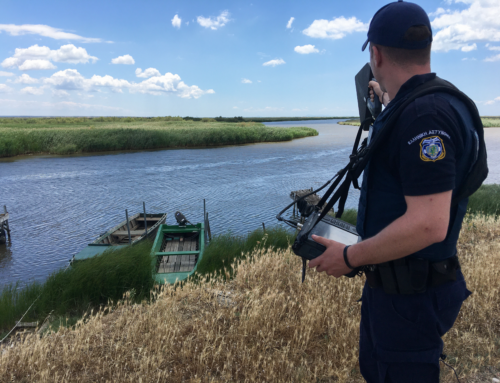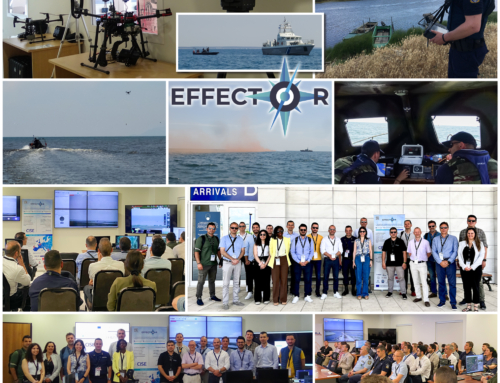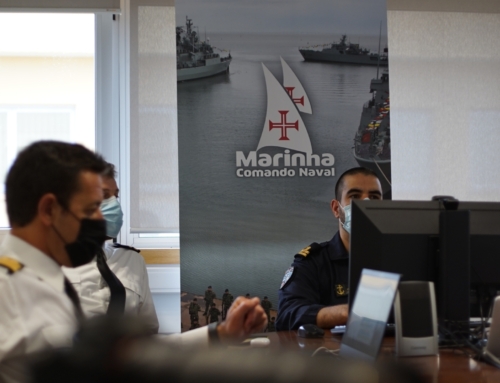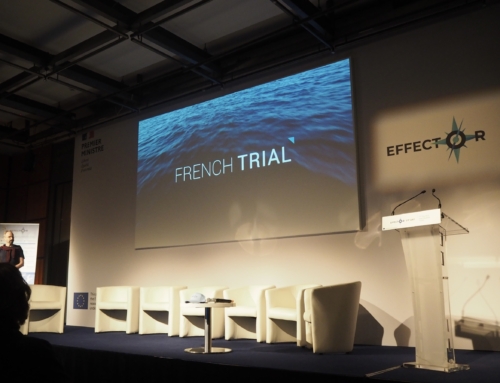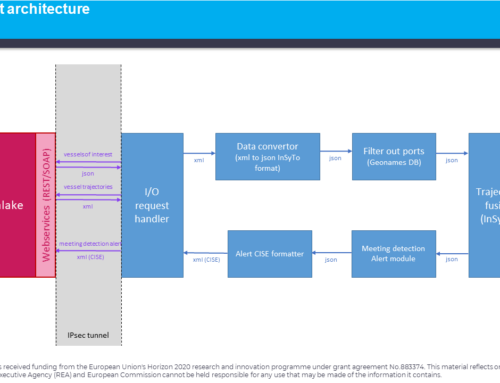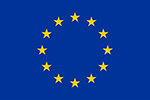EFFECTOR relies on the interconnection of several systems that use different schemas, different semantics, and each having their own set of constraints related to each institutional partner (namely maritime authorities of France, Greece and Portugal) and also due to existing national legacy systems. Past projects (EUCISE and ANDROMEDA) have made possible data and message exchanges through a Common Information Sharing Environment (CISE). However, although CISE carries meanings (semantics) and thus defines a common vocabulary, this vocabulary still has to correspond to existing notions in each of the maritime authorities’ system.
Ontologies for structuring a common vocabulary
Generally speaking, an ontology can be seen as a knowledge representation structure that organizes the concepts of a particular domain of interest, specifies the relations between these concepts, and expresses the semantics (meaning) of both concepts and relations. Ian Horrocks (in What are Ontologies good for? [1]), mentions that “an ontology is an engineering artifact […] [that] introduces vocabulary describing various aspects of the domain being modelled, and provides an explicit specification of the intended meaning of the vocabulary by describing the relationships between different vocabulary terms”. Born from the Web semantic domain, ontologies nowadays are widely used in other domains.
Maritime surveillance relies on a vocabulary manipulated by users and stakeholders (operators, authorities…). This vocabulary represents concepts of the maritime surveillance domain, such as objects (e.g. vessels, buoys…) with their geographic positions, object tracks (namely, sequences of object positions that represent for example vessel trajectories), characteristics of objects such as their type (e.g. vessel objects could be cargo ships, passenger ferries, fishing boats…). This vocabulary (or terminology) represents concepts that can be organized in a graph-like structure and may have properties and relations associated. For example, some locations can be in the open sea, whereas others represent harbours and within harbours some locations would represent more specifically installations such as docks or wharfs.
Exchanging information.
The recent years have seen the European Union develop progressively a Common Information Sharing Environment, CISE, which aims to make member states surveillance systems interoperable. This is based on a network of “nodes” (one per European country) that exchange information on a publisher – subscriber basis. This environment has a model that specifies all the elements (“entities”) usable for exchanging information and recently, the model has evolved into an extended-CISE (eCISE) version. The interoperability with CISE requires a lot of work for linking individually each element from each member state’s national system to elements in the CISE model. Moreover, this has to be repeated with the recent evolution eCISE.
This information sharing environment allows each member state’s surveillance system to exchange information. However, each system processes the information not necessarily in the same way. These processes are defined with complementary information (also called meta-data: information describing information). This meta-information is not only difficult to exchange but difficult to exploit within the systems. Current systems, for efficiency reasons are specifically adapted to tackle specific tasks using specific data and information about the data itself (i.e. meta-data) is not required due to this high specialization and thus far systems have not had to be designed to process this meta-information. The EFFECTOR project adds to current existing systems several novel information sources and sharing information from these novel sources will require the exchange of their associated meta-information in order to help the adaptation of those systems to these new sources.
Integration and semantic interoperability with existing systems.
The interoperability promoted by the EFFECTOR project requires one representation of the information to evolve into another. Several technologies exist for converting information (or data) from one representation into another. Ontologies is one of such technologies as they provide a representation of information. Ontologies carry the semantics (the meaning) of the elements they represent. Each information representation can be represented by an ontology and aligning the different elements in the ontologies together eases switching from one representation to another as the alignments gathers elements that convey the same meaning (same semantics).
Would “one tool to rule them all” be a viable solution? Unfortunately, no; ontology storage relies on technologies (rdf stores or triple stores) that do not scale up very well, especially for spatial data. Typically, these technologies are unable to replace efficiently a database, not to mention more recent big data technologies (such as Hadoop or NoSQL data stores). As a consequence, using ontologies for storing data itself is not recommended: ontologies are knowledge management tools, not data management tools. However, despite this, having “one data representation to rule them all” is perfectly achievable.
Icing on the cake: Reasoning on the structured vocabulary
The graph like structure provided by the ontology also represents “axioms” that specify how concepts and relations can be interpreted. Combining several of these axioms allow reasoning to be performed. For example, expressing that a ship (which is an object) which has a position that corresponds to a harbour and by a wharf, means that that ship can be considered as docked. Another example could be a tug boat on what seems to be collision course with a large cargo ship close to docks but that, in fact, could be a tug coming to tow the cargo into its docking position.


